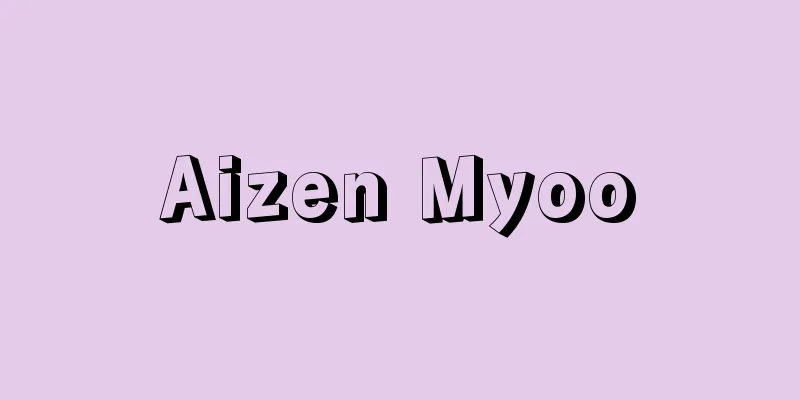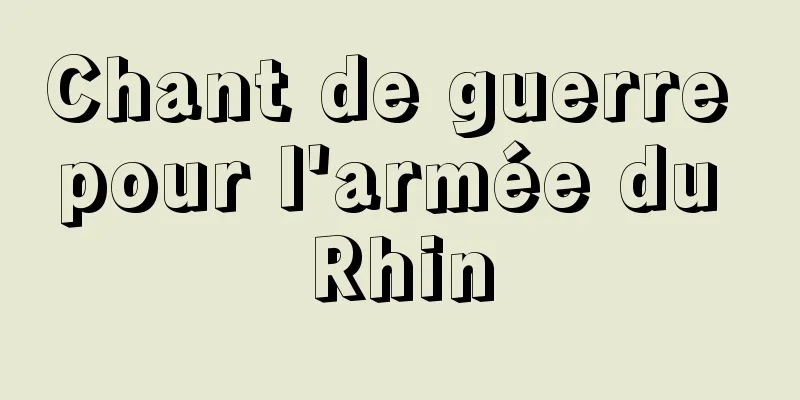Aizen Myoo

|
A statue belonging to the Wrathful or Myo-o sects of Esoteric Buddhism. It is also called Aizen-o for short. Its Sanskrit name is Rāga-rāja, where rāga (transliterated as raga) means red, lust, and love, and raja (rāja) means king. It is said to have 17 attendants, as in the case of Kongosattva (the same entity as Vajrayana Bodhisattva), but in rare cases, as in the Aizen Mandala, it has 37 attendants. Aizen Myo-o refers to the state in which the human mind that craves love (love-lust and devotion) has been elevated to the state of pure bodhi mind (samadhi) of Vajrayana Bodhisattva. In other words, it means that earthly desires are bodhi, and that human earthly desires are equal to the enlightened wisdom of the Buddha. Usually, four-armed or six-armed statues have a sun disk on their halo, but they are not found in the Ryokai Mandala. According to the Kongo-horouka Issai-Yogaya-Yugikyou Sutra, the six-armed statues have red bodies, three eyes, a lion crown on their head, and a heavenly belt (horizontal belt). The objects held are a fist in the first left hand (written as "kare" in the ritual), a five-pronged vajra in the second hand, a vajra bow (arrow) in the third hand, a lotus flower in the first right hand, a five-pronged vajra in the second hand, and a vajra arrow in the third hand. The statue sits in a cross-legged position on a red lotus pedestal on top of a treasure jar. As for unusual statues, the Enchin version includes the "Tenkyu Aizen Myo-o statue" with a flaming halo drawing a bow towards the heavens, and in the Middle Ages there was the "Two-Headed Aizen Myo-o" which combined with Acala, and has its own unique faith. [Toshiaki Manabe] Kamakura to Nanboku-cho period (14th century) Color on silk Artwork section 103.0 x 58.6 cm Aichi Prefectural Museum of Art (Kimura Teizo Collection) Statue of Aizen Myoo Source: Shogakukan Encyclopedia Nipponica About Encyclopedia Nipponica Information | Legend |
|
密教の忿怒(ふんぬ)部あるいは明王部に属する尊像。愛染王とも略称される。サンスクリット名はラーガラージャRāga-rājaで、ラーガ(羅我と音訳する)とは赤色、情欲、愛染の意、ラージャ(羅闍)は王の意。金剛薩埵(こんごうさった)(金剛王菩薩(ぼさつ)と同体)の所変で17尊を眷属(けんぞく)とするが、まれには愛染曼荼羅(まんだら)にみられるように37尊を眷属とする。愛染明王の意味は、人間がもっている愛欲をむさぼる心(愛欲貪染(とんぜん))を金剛薩埵の浄菩提心(じょうぼだいしん)の境地(三昧(さんまい))にまで高めた状態をいう。すなわち煩悩(ぼんのう)即菩提のことで、人の煩悩も仏の悟りの智慧(ちえ)に等しいことを意味する。通常は日輪を光背にした四臂(よんぴ)像あるいは六臂像が多いが、両界(りょうかい)曼荼羅中にはない。『金剛峯楼閣一切瑜伽瑜祇経(こんごうほうろうかくいっさいゆがゆぎきょう)』によると、六臂像は身色が赤く、三目で、頭上に獅子冠(ししかん)、天帯(横帯)をつける。持物(じもつ)は左第一手は拳(こぶし)(儀軌には「彼」と記す)、第二手は五鈷杵(ごこしょ)、第三手は金剛弓(箭(や))、右第一手は蓮華(れんげ)、第二手は五鈷杵、第三手は金剛箭。像は宝瓶(ほうびょう)上にある赤色の蓮台(れんだい)に結跏趺坐(けっかふざ)する。異形像としては、円珍本の系統に、火焔(かえん)光背で天に向かって弓を引く「天弓愛染明王像」があり、さらに中世には不動明王と合体した「両頭愛染明王」があり、独自の信仰をもつ。 [真鍋俊照] 鎌倉~南北朝時代(14世紀) 絹本着色 作品部103.0×58.6cm愛知県美術館(木村定三コレクション)"> 愛染明王像 出典 小学館 日本大百科全書(ニッポニカ)日本大百科全書(ニッポニカ)について 情報 | 凡例 |
Recommend
Iravati [River] - Iravati
…Length: 764 km. In ancient Sanskrit texts it was...
Ehime mandarin oranges
...The area is centered on agriculture and fishin...
Hibiya Riot Incident
A popular riot sparked by opposition to the peace...
Bayle, Pierre
Born November 18, 1647 in Carle-Comte, France [Die...
Glandiceps hacksi (English spelling) Glandiceps hacksi
... The ring-shaped cricket Balanoglossus carnosu...
Tajihi Island
Year of death: 21 July 1st of the Taiho Era (29 Au...
Ritual Music
...The music accompanying the movements is techni...
Hormuz
... In the late Buyid period, the island of Kish,...
Formal attire - Reiso
This refers to formal attire for attending ceremo...
Ladder - Unate
A district of Kashihara City in the central-weste...
Ojak - Ojaku
...Turkmen maintained a relatively good tribal or...
Kālidāsa (English spelling)
An ancient Indian poet and playwright active in t...
Caytonia
...The structure for sexual reproduction of this ...
Light of Korea
A magazine (Korean language) published in colonial...
chemical affinity
…The Greek Empedocles explained this in terms of ...



![Kanagi [town] - Kanagi](/upload/images/67cb3a4051870.webp)





